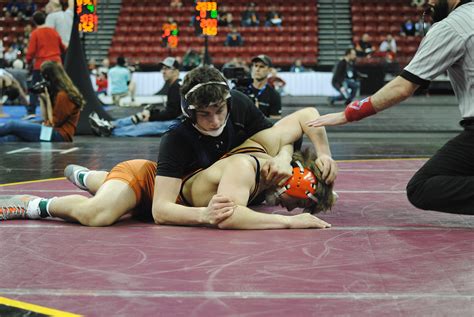
I sometimes refer to it as the Mark Branch strategy.
Branch wrestled for Oklahoma State back in the days of the horse and the buggy – ala 1998.
His freshman year, he went an uninspiring 8-9 during the season…
Only to turn the tables and win the NCAA Championship.
As far as I know, he's still the only wrestler with a losing record to ever snag the top step.
The story gets even more intriguing though….
Branch placed his sophomore and junior years (2nd as a junior) – but badly injured his knee in the finals as a junior.
He came back his senior year, hobbled by a bad knee…
Ran the table going completely undefeated, capped off by another national title.
In a post-match interview, he explained that he had to completely revamp his style due to his injury.
Imagine wrestling your best while in the worst physical health.
I thought back to the numerous times I’ve had to help an injured wrestler adapt to a new way of wrestling. Its always a challenge and takes an extra level of detail to put all the pieces together.
I've assembled a guide to adapting to the two most common injuries to overcome: shoulder injuries and knee injuries.
Keep in mind that some of these recommendations will change (or become moot) depending on which shoulder, or which knee (attacking side or support side).
Okay, alibis in place, we're ready to go.
Shoulder Injury
Handfighting to attacks on your feet, as opposed to open attacks, which are more likely to leave you vulnerable to getting your arm stretched).
Adjustment to your standup so that the bad wing can’t be attacked.
Top: the injured arm becomes your support arm (perhaps you capture the opponent’s wrist with that one, as opposed to running your half or bar with it, where they can impose counter pressure). Stopping the first move so they can't force a scramble will be critical.
Knee injury
Eliminate scrambles that could cause a knee to get torqued awkwardly
Finish quickly and cleanly.
Take a methodical approach on the feet – controlling ties, slowing down the opponent by taking away his space, which limits his speed advantage
On top: shutting down your opponent’s explosive movements by gaining control early (i.e., tie up wrists, block his hips first, etc.
A lumbering, grinding style on top to wear out the opponent and control his movement.
On bottom: the quick standup off the whistle is likely not happening. The handfight standup may be your best option (we teach it in our room, it is an incredible advanced standup for shutting down leg riders and riding beasts). The handfight standup is more deliberate but much more controlling by nature. Its also the best standup to use when facing top level opponents.
Those are just a few of the adjustments you can make. For a complete gameplan, I recommend scheduling a personal session or giving our small group training a try this week.
Randy


Leave a Reply
You must be logged in to post a comment.